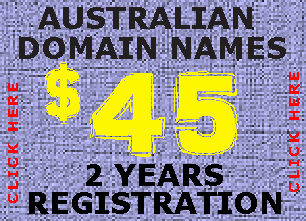Indigenous Australians have lived in the present area of the Northern Territory for an estimated 40,000 years, and extensive seasonal trade links existed between them and the peoples of what is now Indonesia for at least five centuries.
With the coming of the British, there were four early attempts to settle the harsh environment of the northern coast, of which three failed in starvation and despair. The Northern Territory was part of New South Wales from 1825 to 1863, except for a brief time from February to December 1846, when it was part of the short lived colony of North Australia. It was part of South Australia from 1863 to 1911. Under the administration of South Australia, the overland telegraph was constructed between 1870 and 1872.
A railway was also built between Palmerston and Pine Creek between 1883 and 1889. The economic pattern of cattle raising and mining was established so that by 1911 there were 513,000 cattle. Victoria River Downs was at one time the largest cattle station in the world. Gold was found at Grove Hill in 1872 and at Pine Creek, Brocks Creek, Burrundi, and copper was found at Daly River.
Letters Patent annexing the Northern Territory to South Australia, 1863
On 1 January 1911, a decade after federation, the Northern Territory was separated from South Australia and transferred to Commonwealth control. Alfred Deakin opined at this time “To me the question has been not so much commercial as national, first, second, third and last. Either we must accomplish the peopling of the northern territory or submit to its transfer to some other nation.”
In late 1912 there was growing sentiment that the name “Northern Territory” was unsatisfactory. The names “Kingsland” (after King George V and to correspond with Queensland), “Centralia” and “Territoria” were proposed with Kingsland becoming the preferred choice in 1913. However, the name change never went ahead.
For a brief time between 1927 and 1931 the Northern Territory was divided into North Australia and Central Australia at the 20th parallel of South latitude. Soon after this time, parts of the Northern Territory were considered in the Kimberley Plan as a possible site for the establishment of a Jewish Homeland, understandably considered the “Unpromised Land”.
During World War II, most of the Top End was placed under military government.
This is the only time since Federation that an Australian state or territory has been under military control. After the war, control for the entire area was handed back to the Commonwealth. Indigenous Australians had struggled for rights to fair wages and land. An important event in this struggle was the strike and walk off by the Gurindji people at Wave Hill Cattle Station in 1966.
The Commonwealth Government of Gough Whitlam set up the Woodward Royal Commission in February 1973, which set to inquire into how land rights might be achieved in the Northern Territory. Justice Woodward’s first report in July 1973 recommended that a Central Land Council and a Northern Land Council be established in order to present to him the views of Aboriginal people. In response to the report of the Royal Commission a Land Rights Bill was drafted, but the Whitlam Government was dismissed before it was passed.
The Aboriginal Land Rights (Northern Territory) Act 1976 was eventually passed by the Fraser Government on 16 December 1976 and began operation on the following Australia Day (26 January 1977). In 1978 the Territory was granted responsible government, with a Legislative Assembly headed by a Chief Minister.
During 1996 the Northern Territory was briefly one of the few places in the world with legal voluntary euthanasia, until the Federal Parliament overturned the legislation. Before the overriding legislation was enacted, three people committed suicide through voluntary euthanasia, a practice orchestrated by Dr. Philip Nitschke.
Information supplied here complies with and follows the Guidelines of Wikipedia for re-using content Content from this page is drawn from Here. All content is the property of their copyright owners.

